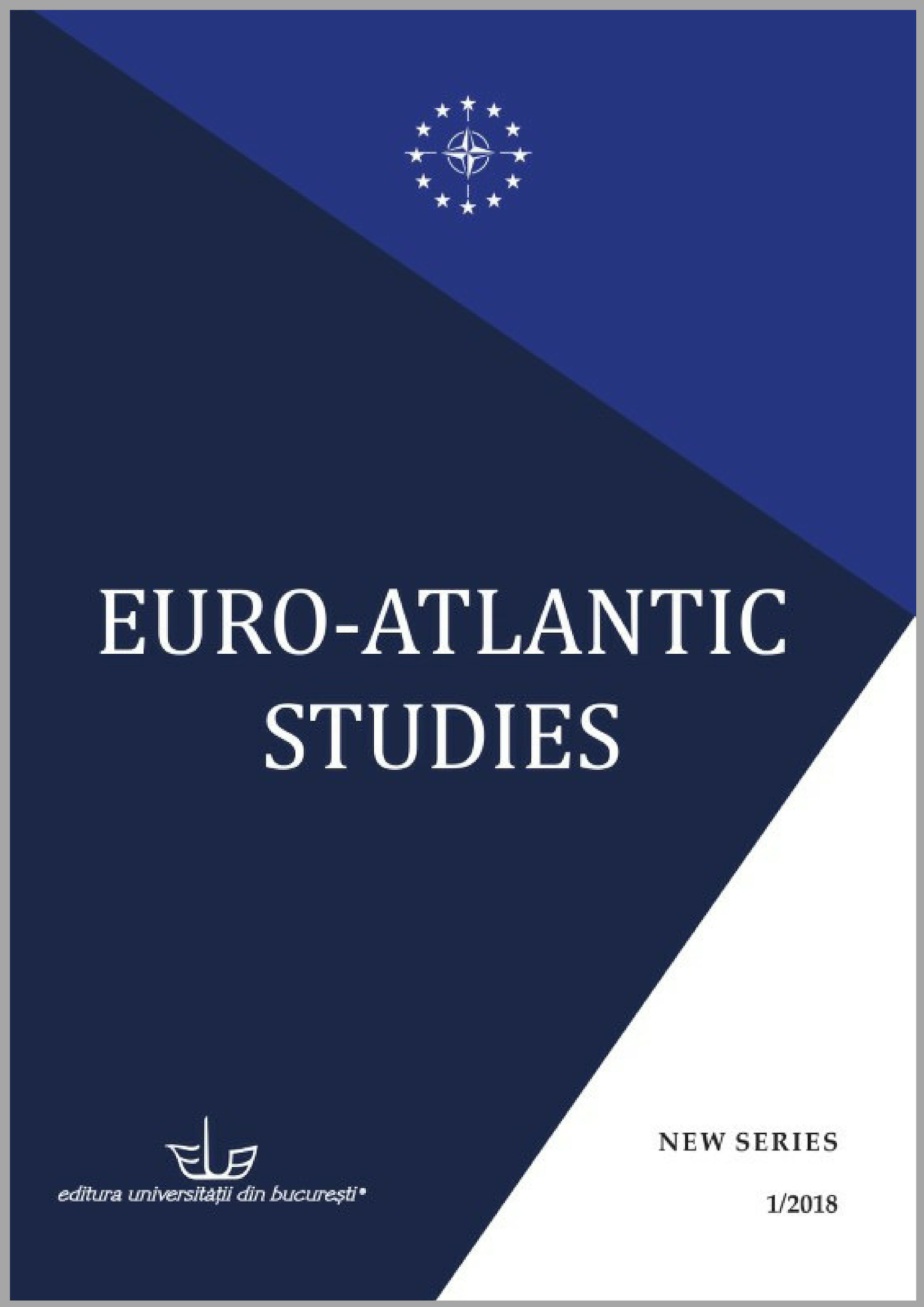
We kindly inform you that, as long as the subject affiliation of our 300.000+ articles is in progress, you might get unsufficient or no results on your third level or second level search. In this case, please broaden your search criteria.

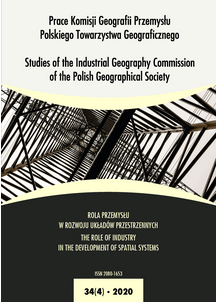
Changes in the transport infrastructure in China, Asia and the Russian Federation go along with the main regional geo-economic trends of their development. The core of the suggested initiatives from China is the inclusion of Asian countries and Russia in the list of transit states in order to form alternative multimodal transport corridors in the direction «East-West» (China-EAEU-EU route). The present research deals with the problems of the development of logistics infrastructure in the Eurasian Economic Union (EAEU) with the purpose of further improvement of transit opportunities in the delivery of goods from China to the European Union. The authors of the article take into consideration that the EAEU logistics infrastructure is an established and evolvable system which is formed under the influence of globalisation processes and regionalisation of the world economy. The unified transport system of the EAEU countries formed during the Soviet period needs modernisation. Modern conditions of transportation routes in EAEU are observed on the basis of the specific examples as well as the transformation and modernisation options of a transport vector in the direction of China-EAEU-EU. The main trends in the infrastructure development in Central Asia are reflected in the regional projects of railway and automobile communications with the integrational priorities. The development of logistics infrastructure is essential for the full realisation of the transit potential inherent in the integration within the Eurasian region.
More...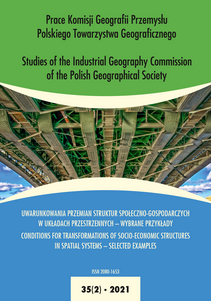
In the Russian Federation, interregional cooperation is limited, which negatively affects regional development and contributes to growing regional disparities. The goal of this research is to gain better understanding for slow and inconsistent development of interregional relations in Russia. The main hypothesis is that the lack of proper coordination and communication between the federal and regional levels of government, between regions themselves, as well as between regional authorities and other stakeholders in regions’ development is one of the key problems that hampers development of interregional cooperation in contemporary Russia. Retrospective, statistical, and content analysis were used to test this hypothesis. The analysis of the federal policy toward regional development since 1990 has shown gradual increase in centralisation of authority. The regional policy stimulated interregional competition and dependence on federal investments and subsidies. Nevertheless, the study of strategic plans of Siberian regions shows that with proper coordination and communication between interested parties some of the problems inhibiting interregional cooperation can be resolved. Better coordination, in turn, requires improvement of the institutional infrastructure. The findings are relevant for policy makers and scholars in the field of regional development. Further research is needed concerning the most efficient forms of coordination institutions.
More...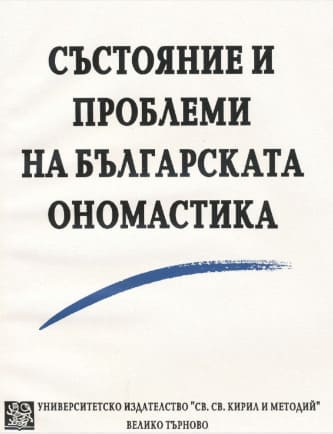
This article is a contribution to the study of the toponomy of the village of Delchevo, located in the Gotse Delchev region. It complements the book “Local names in the Gotse Delchev region (Nevrokop region)” by Yordan Ivanov. One hundred and sixty local names from the area of the village, which are missing in the study done by Ivanov (not registered), are represented here. The article also contains 28 new street names of the village of Popovi livadi, which was established in 2015.
More...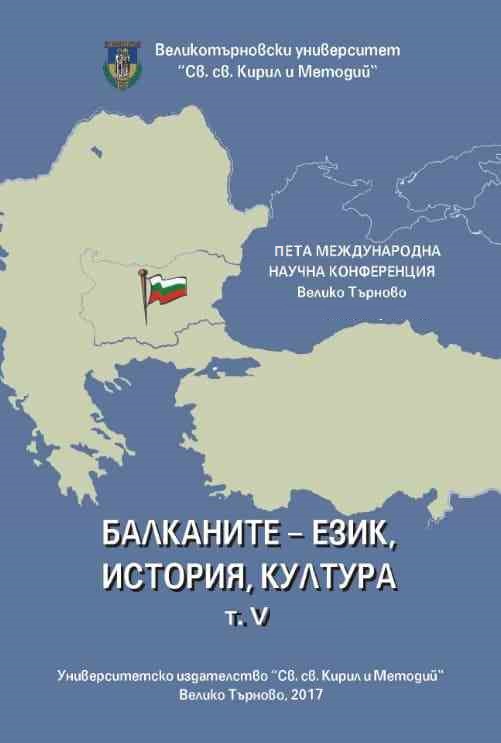
The author’s interest in this topic and its general relevance are provoked by the insufficient research in the field of spatial planning in the Balkan region – especially concerning the period after the political changes that started in the 90s. To widen the scope of the study, we concentrate on four countries that differ in terms of socio-economic parameters, European integration stage, trends in the conceptual evolution of their spatial planning systems, etc. The main idea of this article is to offer a theoretical and methodological points for empirical research designed to compare the different notions of territory/space, to scrutinize the diverse planning cultures, and to summarize the guiding principles set in the legislative frameworks and main planning documents.
More...
The Balkan economies have always been evasive in their development. That is partly because of the ravaging wars they had suffered in the last century. On the other hand, most of the countries (except Greece) were under the Communism regime for approximately half a century. Some of them were satellite states of the Soviet Union, i.e. Bulgaria and Romania, to à great extent. The western Balkan countries were part of the Federal Republic of Yugoslavia. During that period of half a century the Balkan economies were in state of slow development. In the 1990s these countries began their economic transformation to market-based economy. The process, however, was evasive but for some of them it was economical thrive. Some of the economies were not able to catch up the development of other European countries that were also under the Communism regime. When the World Financial Crisis happened in 2007 the Balkan economies were in shock. Recession occurred. Aim of this article is to analyze how the Balkan economies are handling the effect of the financial crisis, and how they are developing. We have used typological approach in order to distinguish two groups of countries that have similarity in their economic development.
More...
Today the territory of Turkey, having in mind its history and geographical position, is located at a strategic crossroads, where two continents - Europe and Asia, meet. Many civilizations left numerous cultural layers and lasting impression in the world historical and cultural heritage. This unique position creates its European, Balkan, Mediterranean, Middle Eastern, Asian and Caucasian appearance simultaneously. Today, in terms of its economic, political and cultural development, it is at a higher level. Turkey is a country that every foreigner wants to visit and see.
More...
The article analyzes some characteristics of the electoral geography of the United States based on the results of the presidential elections by states and counties. It tracks the dynamics of voters and the peculiarities of the electoral system in spatial terms. It also characterizes the electoral preferences of the main areas of the country.
More...
The tourist region determination in Bulgaria was set up in the 1960s. There has been a new trend of interest in the tourist regions. The concept of tourist location, which was implemented in the very first tourist region determinations in our country, still has its popularity; it is a part of the modern geographic research tools of tourism. The leading approach in the determination of tourist locations is associated with our idea of the location as a relatively small area of neighbouring settlements, or area, where tourist activity is highly concentrated. In this research 10 tourist locations have been identified: Teteven-Ribaritsa, Troyan, Apriltsi, Lovech, Gabrovo, Tryavna-Dryanovo, Veliko Tarnovo-Arbanasi, Elena, Pleven, Ruse. These tourist locations can be distinguished by territory according to 10 economic and geographic criteria.
More...
The history of Stara Zagora determines some of the most remarkable features of its identity. Today Stara Zagora is a logical consequence of the intertwining of different historical epochs of the past eight millennia. Every era has created certain tangible and intangible traces, spatial structures and cultural models, source of inspiration and knowledge for today. In recent decades, historical sites and their full expression is recognized as a factor in economic development. A similar idea becomes reasonable storage and modern interpretation of history, an important challenge for the Municipal Development Plan of the Municipality of Stara Zagora. Prehistory left the Bereket mound, representing the largest prehistoric structure in Bulgaria and the Neolithic dwellings, which are a unique source of information about lifestyle before eight millennia. Material historical sites and various cultural patterns were formed in time. It is the understanding that the legacy goes beyond the framework of legally defined cultural values, that is, objects placed under legal protection. Particularly relevant is the theme of the economic significance of the cultural heritage, seen as a prerequisite for the development of the tourism sector and its associated service functions. Attractiveness of cultural values, combined with planned and built adjacent environment, create a tourist product which is high in quality.
More...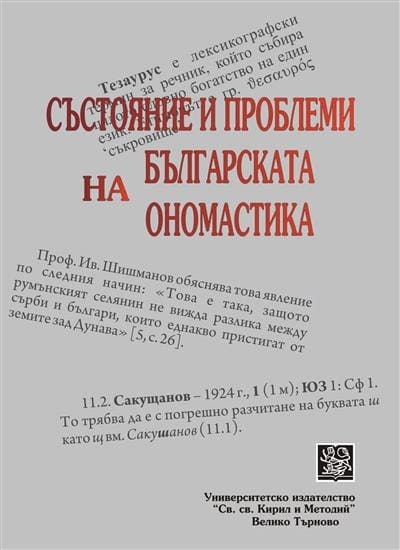
The article starts with a review on what has been written so far about the denominations of the Pirin mountain - Orbel, Beride and Yudenitsa – considered to be older – and outlines some hypotheses about their origin. Then we present the interpretations of different authors of the meaning behind the name Pirin. Some consider it to be Slavic, and others – Thracian. Most recently, there’s another view that the name has Ancient – Bulgarian (Bulgarian, Prehistoric – Bulgarian, Proto – Bulgarian) origins. The analysis of the different hypotheses results in two leading interpretations. The first one is the Slavic, supported by arguments from Ivan Duridanov. And the second is the Ancient – Bulgarian, formulated by Petar Goliiski, on the basis of a promulgated document by Kazimir Popkonstantinov from the 9th century, where the name Pirin has been attested. Based on what has already been written and the thorough analysis of the geographical (territorial) display of all registered toponyms so far, linked to the name Pirin (Pìrin (Pirìn), Pirìn kuzù, Pìrina, Pirin, Pirìnski vàlog, Pirìnsko prisòe, Pirìnski livàdi and Perin), an interesting conclusion could be drawn. Almost all of the above mentioned denominations are registered within the confines of Medieval and present day Bulgaria, except for two: Perin in Novgorod, Ukraine and Pirin in Sarajevo! The Ukrainian Novgorod is situated at the middle stream of the river Dnieper – a region that was the heart of Old Great Bulgaria – the domain of Khan Kubrat. It is harder, however, to provide evidence of Bulgarian presence in Sarajevo. The inclusion of Bosnia and Herzegovina within the confines of the Bulgarian country during the time of the kings Simeon I the Great and Samuil does not prove by any means that Bulgarians used to live there. However, Petar Goliiski quotes a message from the Armenian Simeon Lehaci (from the period of 1608 – 1620), connected with the presence of a Bul garian ethnical element in Sarajevo, which says: “It took us five days from here to get to Bosnia Saraj [Sarajevo], a big city, built on a high mountain… The inhabitants of this country [Bosnia] are big, tall, strong and muscular men. They have absolutely no knowledge of Turkish language and speak only Bulgarian… There are Bulgarian monasteries all around Bosnia… Everyone in Bosnia speaks Bulgarian”. This explains the Bulgarian relation to the presence of the toponym Pirin in Sarajevo. The toponyms of Pirin are widespread in lands, which had been inhabited by the Old Bulgarians in the past, therefore there’s a reason to believe that the oronym Pirin has a more plausible Ancient – Bulgarian, rather than Slavic origin.
More...
Review of: Danuta Gibas-Krzak, Geopolityka Bałkanów PWN, Warszawa 2020, ss. 488
More...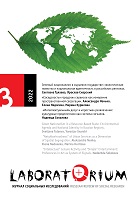
Review of: Aileen Friesen. Colonizing Russia’s Promised Land: Orthodoxy and Community on the Siberian Steppe. Toronto: University of Toronto Press, 2019. 224 pp. ISBN 9781487531553
More...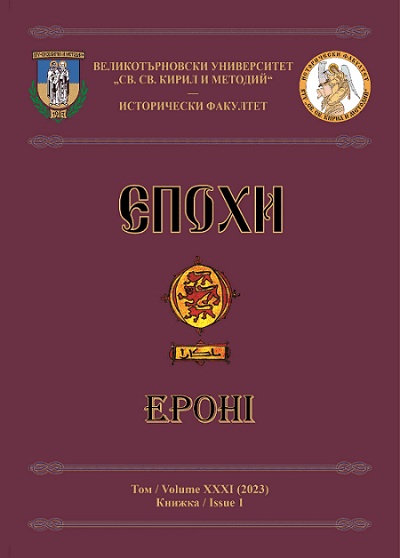
Ksani valley, due to its geographical location, has played an important role in the political, economic and cultural life of Georgia since time immemorial. It is located in the western part of the Mtskheta-Mtianeti region and is administratively within the framework of three municipalities. It belongs to Akhalgori municipality from Khloi Tbi to Odzei, Odzei is a village of Dusheti municipality, and from Tsovris to Tsikhisdzire is Mtskheti municipality. There were two important political units in the Ksani valley: Saeristavo and Samukhranbatono of Ksani, which were connected to each other, as well as to different regions of Georgia and the North Caucasus by a number of important roads. The paper talks about the roads connecting the Ksani valley both internally and with the outside world. At the beginning, attention is paid to the important factors of the promotion of Largvis, the former center of Saeristavo, among which the roads and paths existing here were given a leading role. Roads coming from the valleys of Churti, Karchokh-Zhamuri and Niazum converged in Largvis. In addition, it included the valleys of Saeristavo Iviri, Little Liakhvi and Kholot-Kvitkiri of Niazm (later Ksni). In the work, a proper place is given to the roads connecting these valleys with Kartli Bar or Transcaucasia. From the middle of the 14th century, when the possession of the Eristavas of Ksni increased sharply in the direction of the Kartli Vaki and the residence of the Eristavas gradually moved from the north to the south, which should have happened at the turn of the 16th-17th centuries, the new center of Saeristavo, Akhalgori, acquired the function of connecting the mountain and the bar. By the second half of the 17th century, one of the powerful principalities in Georgia already covered a large area: the valleys of Ksni, Alevi, Safersheti, Churti, Niazm, Karchokhi, Zhamuri, MaghranDvaleti sankhas, a significant part of the Lekhuri valley, Kholot-Kvitkiri, Isuri, Mejudi, Tsromi. , small Liakhvi valleys and the foothills. The road network is also growing and becoming more important. In the paper, the main roads of the inter-rural and Ksani Saeristavo regions are highlighted, among which the roads connecting Akhalgori - Tbilisi, Akhalgori - Ananuri, Akhalgori - Dariali Gorge, Mejvriskhevi - Dariali Gorge, Mejvriskhevi - Tbilisi, Mejvriskhevi - Gori and Mejvriskhevi - Tskhinvali are highlighted. The role assigned to these roads in the political and economic life of the capital and the country is highlighted. We are also talking about the measures that the Royal Court implemented in connection with the maintenance of roads in accordance with the appropriate legislation. Many Georgian and foreign travelers do not use the roads in the Ksani valley, their story has a proper place in the work. At the end of the paper, the sad reality that followed the August 2008 war is reviewed; Today, the roads connecting the Ksni valley and especially the mountainous region with the outside world are on the brink of collapse due to lack of maintenance.
More...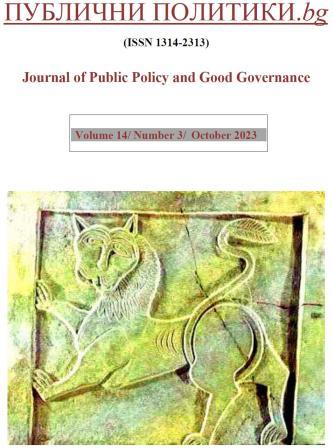
Applying nature-friendly solutions is key to adapting cities to climate change, mitigating the ongoing destructive processes and achieving sustainability over time. The main questions that we should consider are related to the expansion of cities, the ways of their adaptation to the rapidly changing environment, as well as the already implemented projects and their future. Adaptation through the application of environmentally friendly solutions and new technologies does not sound like an alternative, but the only way to achieve a longer-term sustainability. All this, of course, would not be possible without a change in the behavioral attitude of society.
More...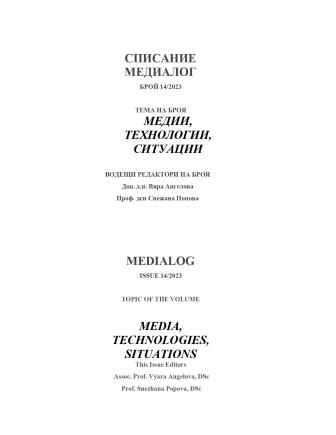
The economic policy of online media. Manufacture of dissent." is an extremely relevant and modern academic research, which builds a bridge between the foundations of the theory of Mass Communication and the rapid development of processes in the field of digital media in the 21st century. The author Peter Ayolov persuasively points to the "production of dissent," a “divide-and-conquer” online principle as a dominant commercial paradigm, responsible for the erosion of many democratic processes in modern societies.
More...
The purpose of the article is to analyze the transformation of the behavioral patterns of Kasimov Tatar women in the first half of the XX c. The specific task is to reveal the role, to show the achievements of the Kasimov Tatar women in the context of the history of the city of Kasimov and the country in the first half of the XX c. The main sources are published scientific and popular science publications; documents from the State Archives of the Russian Federation introduced into scientific circulation for the first time; materials of the Kasimov newspaper “Red Sunrise”. Based on the aggregation of these data, the activities of women from national minorities in the system of education, art and science, as well as in social and political life are covered. Particular attention is paid to outstanding personalities, whose names have become widely known outside the Kasimovsky district, namely the teacher S. Kh. Bulatova, mathematician S. Kh. Shakulova, opera singer Z. G. Bayrasheva, writer and statesman Z. Kh. Burnasheva and others. The authors conclude that among the Kasimov Tatar women there were professionals who broke the stereotypes about Tatar women, who were open to modernization processes and actively participated in their implementation.
More...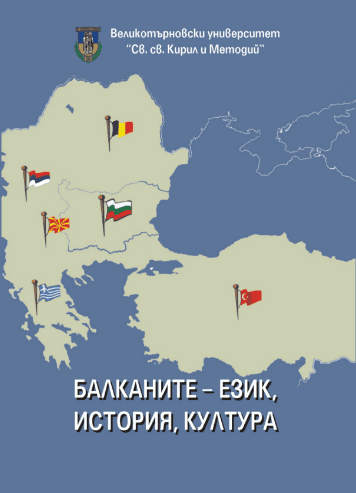
Bektashism became one of the Balkans’ essential beliefs and part of their cultural richness when Hacı Bektas Vel’s ideas spread from Anatolia to the Balkans. During the Seljuk period, Sarı Saltık and Bektashi beliefs and culture, which manifested in the region, rapidly expanded after the Ottoman transition to Rumelia. Following the Ottoman conquests, Bektashism acquired large dervish lodges and numerous dervish communities in the area of today’s Bulgaria. In particular, the Bektashis undertook the spiritual training of the Janissary Corps, contributing to the process of the newly conquered places becoming a Turkish homeland. The Bektashis, whose fate was united with that of the Janissaries, faced a severe ban in 1826. Bektashism could not easily overcome the problems following this long-lasting ban. Dozens of Bektashi lodges’ properties were confiscated and closed down in the territory of today’s Bulgaria. The tomb area belonging to many Bektashi elders was left to the administration of other sects, and the Bektashis faced the danger of being assimilated and destroyed. Large buildings and rich properties (Osman Baba and Ali Baba in Haskoy, Musa Baba, Huseyin Baba, and Koc Dogan in Hazergrad (Razgrad) in the province of Silistra, Demir Baba lodge in Deliorman district of Hazergrad (Razgrad), Musa Baba in Novi Pazar (Kozluca), Horasani Ali Baba and Tay Hizir Ali Baba in Ruscuk, Ali Koc Baba in Nikopol, Hafiz Baba in Shumen, Selahaddin Baba in the banner of Vidin, Akyazili Sultan in Varna, Sari Saltik in Balchik, Mu’min Baba and Turhan Baba in Eski Zagra, Kidemli Baba in Nova Zagra, Nasuh Baba and Kizana in Eskicuma, Hizir Baba in Kyustendil (Dupnitsa), Hizir Baba and Cafer Baba in Cisr-i Mustafa Pasha the dervish lodges) were closed after the prohibition of 1826. Their assets were confiscated, and their elders and dervishes were exiled. In the second half of the 19th century, especially during the reign of Sultan Abdülaziz, the Bektashis wanted to take back and revive these monasteries. With the decrease of state pressure on the Bektashis, their activity intensified. In this paper, the prohibition of Bektashism in 1826 and its reflection on the Bektashi monasteries in today’s Bulgarian territory will be discussed in the light of first-hand sources, primarily archival records.
More...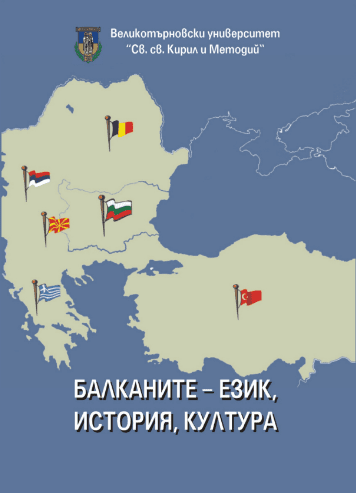
Man and the environment constitute an inseparable binomial. Images of their coexistence in a given geographical space are reflected through natural and cultural landscapes. While nature has “painted” the landscape with wide brushes, through the mountains, plains and hills between them, the human hand has emphasized the “tonalities” of painting the traces of its activity. Man has given his identity to the space lived and administered by him. His culture is naturally reflected in Herskovich’s definition of “as a man-made part of the environment.” At the same time, cultural landscapes show regional identity, as a perception that human society has made of the opportunities and constraints that the environment has provided for it.
More...